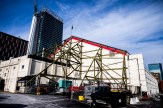You can’t see your destination on Northeastern’s new pedestrian bridge. But you always get there.

You know where you are going. But you can’t see your destination.
Which is not at all a bad thing.

New student Arvind Thamilchelvan makes his first trip across the bridge. Photo by Ruby Wallau/Northeastern University
In terms of efficiency, the new pedestrian bridge was built for people like me. It connects the two ends of campus (as well as the Roxbury and Fenway neighborhoods of Boston) along a path that is better suited to crossing the railroad tracks than, say, the Columbus Avenue garage, which had been my go-to route.
The garage is dark and filled with cars. Whereas the bridge is bathed in light and the air is fresh. On this particular day, as I hurry along, typically late, the cloudless blue sky contrasts with the burnt orange of the layered steel walls that enclose the bridge for reasons of public safety.
“I didn’t know what it was going to look like,” says Rebecca Harman, a graduate student in physics. “I use it, like, twice a day, and this is much better than the way I went before.”
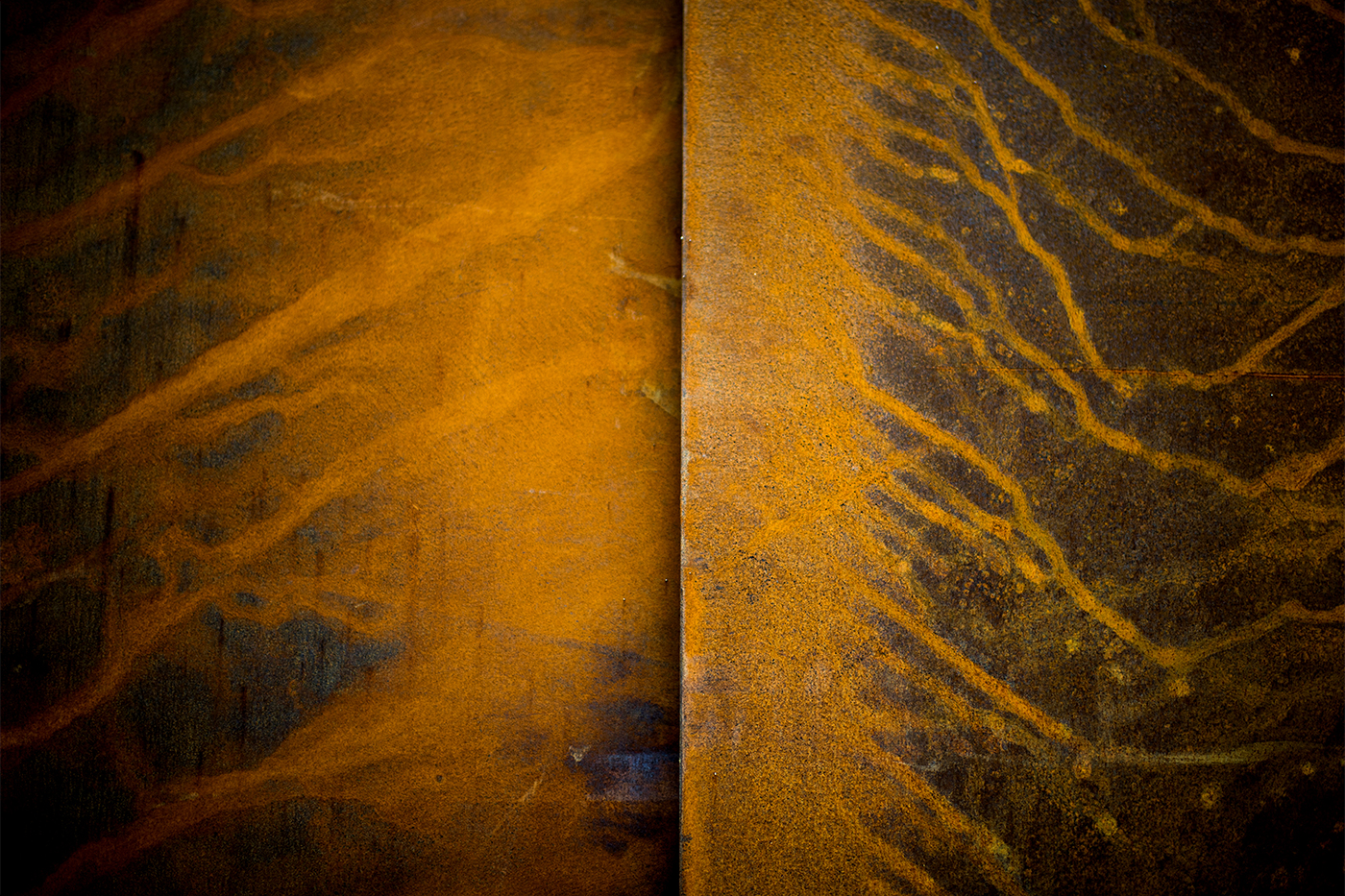

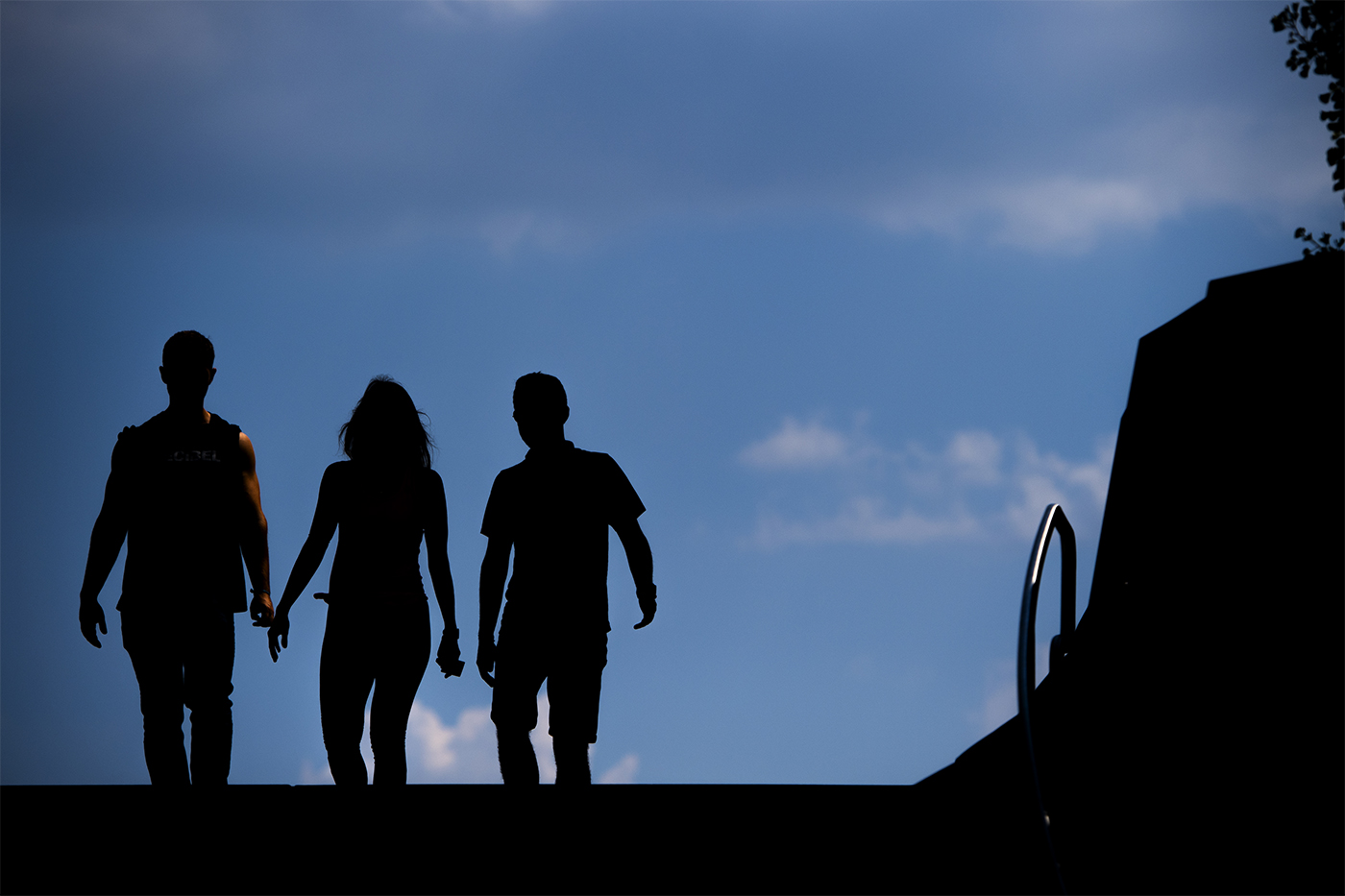
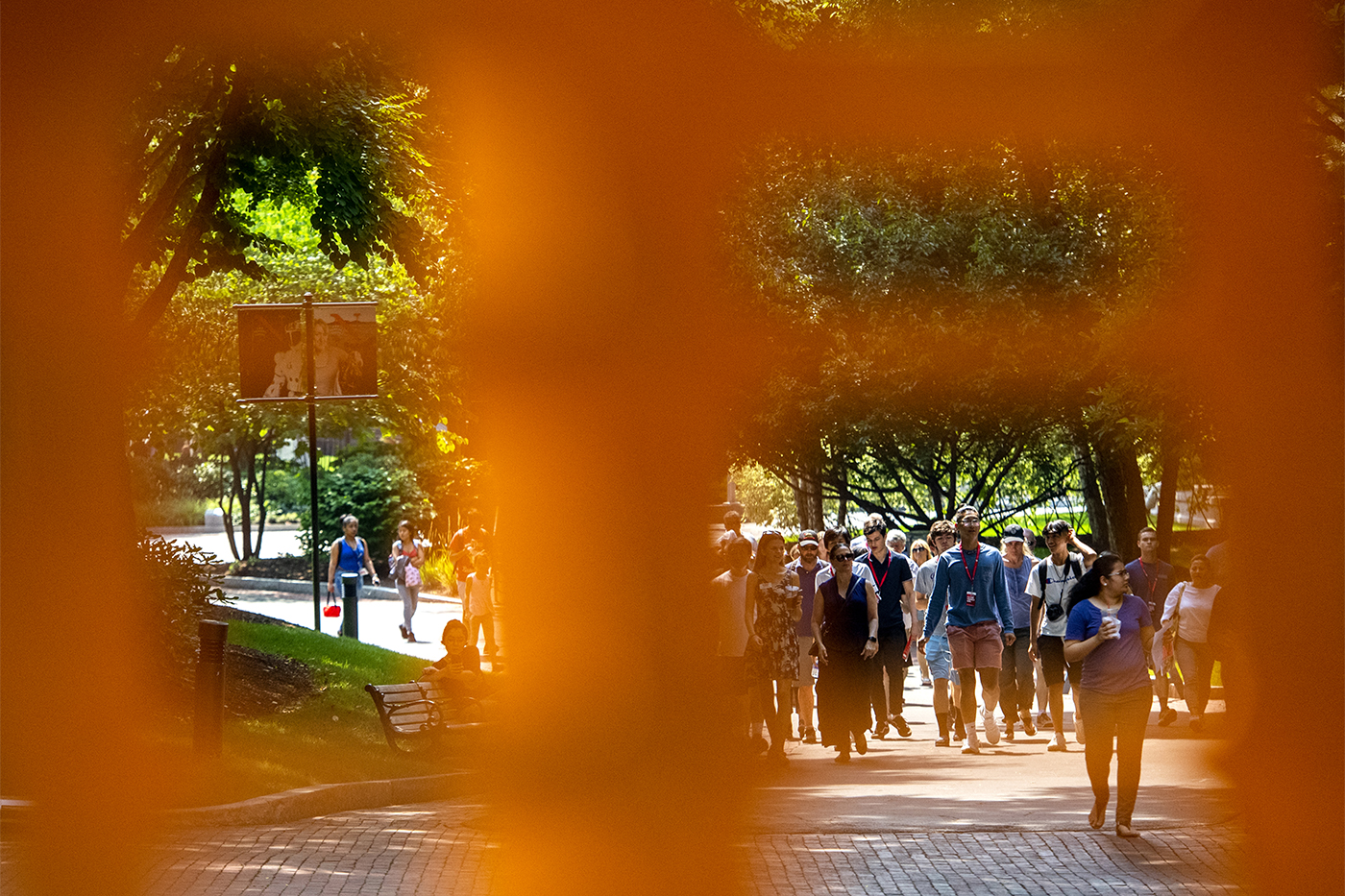
Designed by the architecture firm Payette, the structure is provocative. The rectangular walls of rustic steel, embedded with copper, will mature to a dark, thick brown as the bridge ages. What will not change is its pragmatic design of swerving, sloping curves that enable you to slalom (albeit at foot speed) over the tracks and between the campus buildings.

Student Merline Senat crosses the pedestrian bridge. Photo by Ruby Wallau/Northeastern University
It is because you can’t quite see where you are going that the high steel walls—each inscribed with its own weather-drawn pattern of lines and shadows—leave you wondering where this passage is taking you, exactly, and what is on the other side.
Which is where the cracks of light come in.
They reach in from between the steel panels, encouraging you to stop momentarily for sites that might otherwise be taken for granted—the skyline of Back Bay, the extended tracks like fallen ladders, the comings and goings of the rickety subway and the powerful Amtrak trains. Nosey dog noses have been seen poking through the spaces between the walls and barking at passersby below.
By limiting the view ahead, the bridge transforms into an artwork that draws your attention to where you are, as opposed to where you will be.

During this quick walk, a couple of minutes maybe, it’s the bridge’s idiosyncrasies that make you focus on the here and now. During heavy storms the rainwater funnels down the steps into the center of campus, at that place where the curves straighten out.
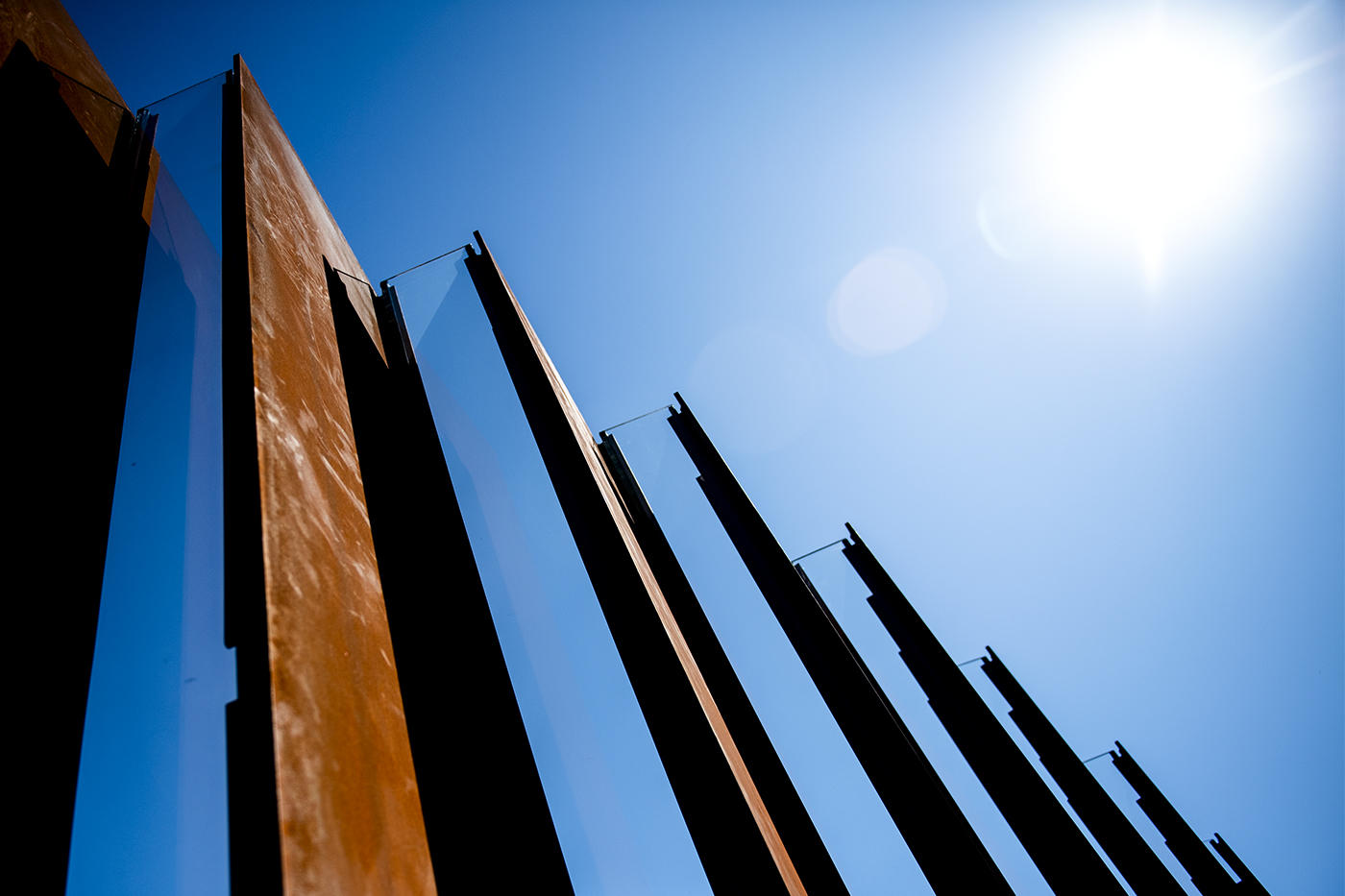
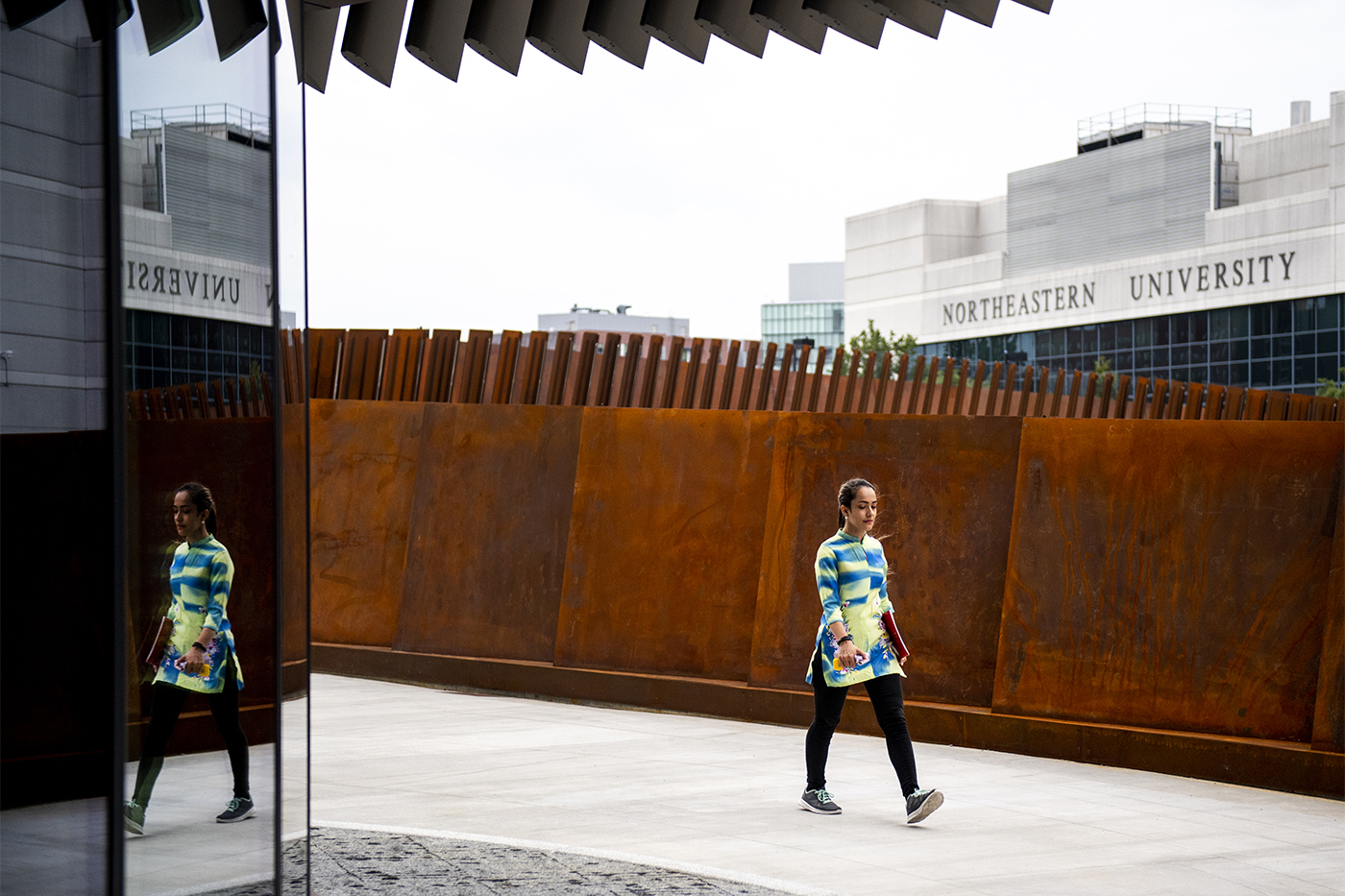
“This is my first time crossing it,” says Arvind Thamilchelvan, a graduate student in robotics who arrived a few days ago from Chennai, India. “The colors are fascinating.”
For how many decades has there been a need for a bridge like this: a pathway that makes the journey worthwhile.
For media inquiries, please contact media@northeastern.edu.

